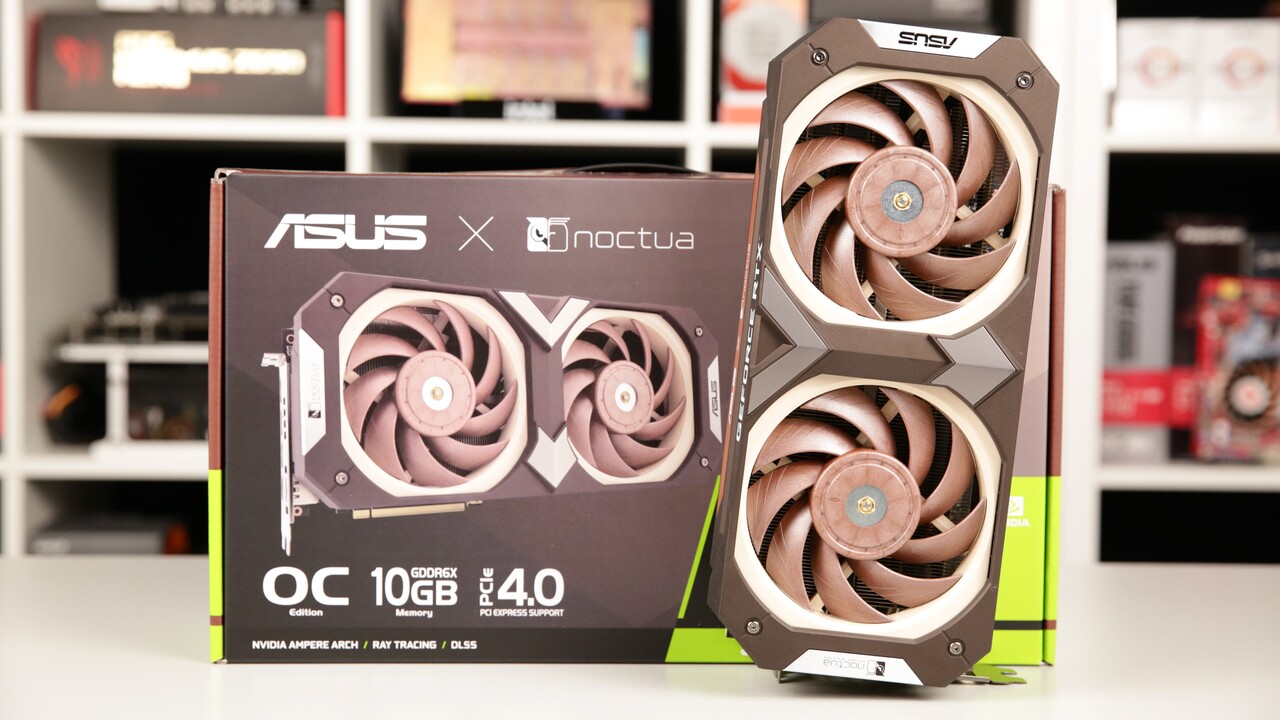Asus GeForce RTX 3080 Noctua OC “titleonly”
: Test |CUP | Specs |Config
After the GeForce RTX 3070 Noctua Edition, Asus has once again teamed up with the Austrian cooler specialist Noctua and implemented the GeForce RTX 3080 Noctua OC Edition, which was almost eagerly awaited in autumn 2021. This model also outclassed the assembled competition in the test.
Updated 05/25/2022 1:56 p.m
Asus and Noctua have the RTX 3070 followed by the 3080
It was a made-to-measure debut: In autumn 2021, Asus teamed up with the Austrian cooler specialist Noctua and, with the GeForce RTX 3070 Noctua OC Edition (test), not only presented the quietest GeForce RTX 3070 ever tested by ComputerBase, but also one of the coolest . The assembled custom design competition was outclassed in one fell swoop.
It was still unclear at the time whether the cooperation between Asus and Noctua would continue after the first attempt – the success of the 3070 was to be a deciding factor. The project obviously worked, because now Asus is launching the second model, the GeForce RTX 3080 Noctua OC Edition, which is located above the other graphics card.
But can Asus and Noctua repeat the success of the GeForce RTX 3080 Noctua OC Edition? The test will clarify that. With a power consumption of 340 watts and thus 100 watts more than the first edition, the requirement profile for the cooler increases, but the competition also has to dissipate more waste heat on a GeForce RTX 3080.
The Asus GeForce RTX 3080 Noctua OC Edition in detail
The Asus GeForce RTX 3080 Noctua OC Edition is strongly based on the GeForce RTX 3070 Noctua OC Edition and follows the same recipe for success. The graphics card itself is based on the Asus GeForce RTX 3080 TUF: the clock speeds are identical, as is the PCB. The heatsink underneath the fans and the radiator shroud is also based on the TUF model of the 3080, but has been drilled out.
On the Asus GeForce RTX 3080 Noctua OC
Bild 1 von 5
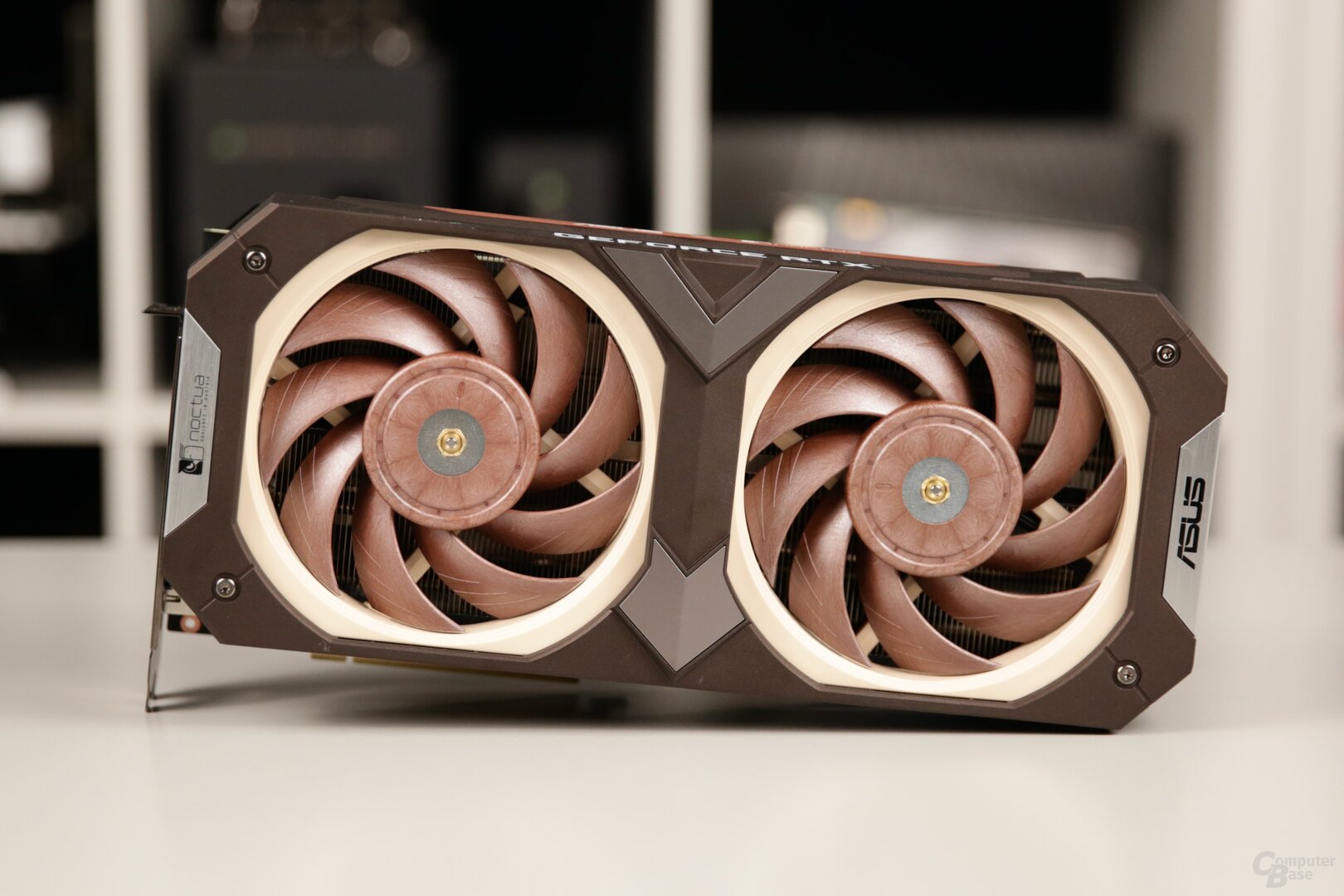
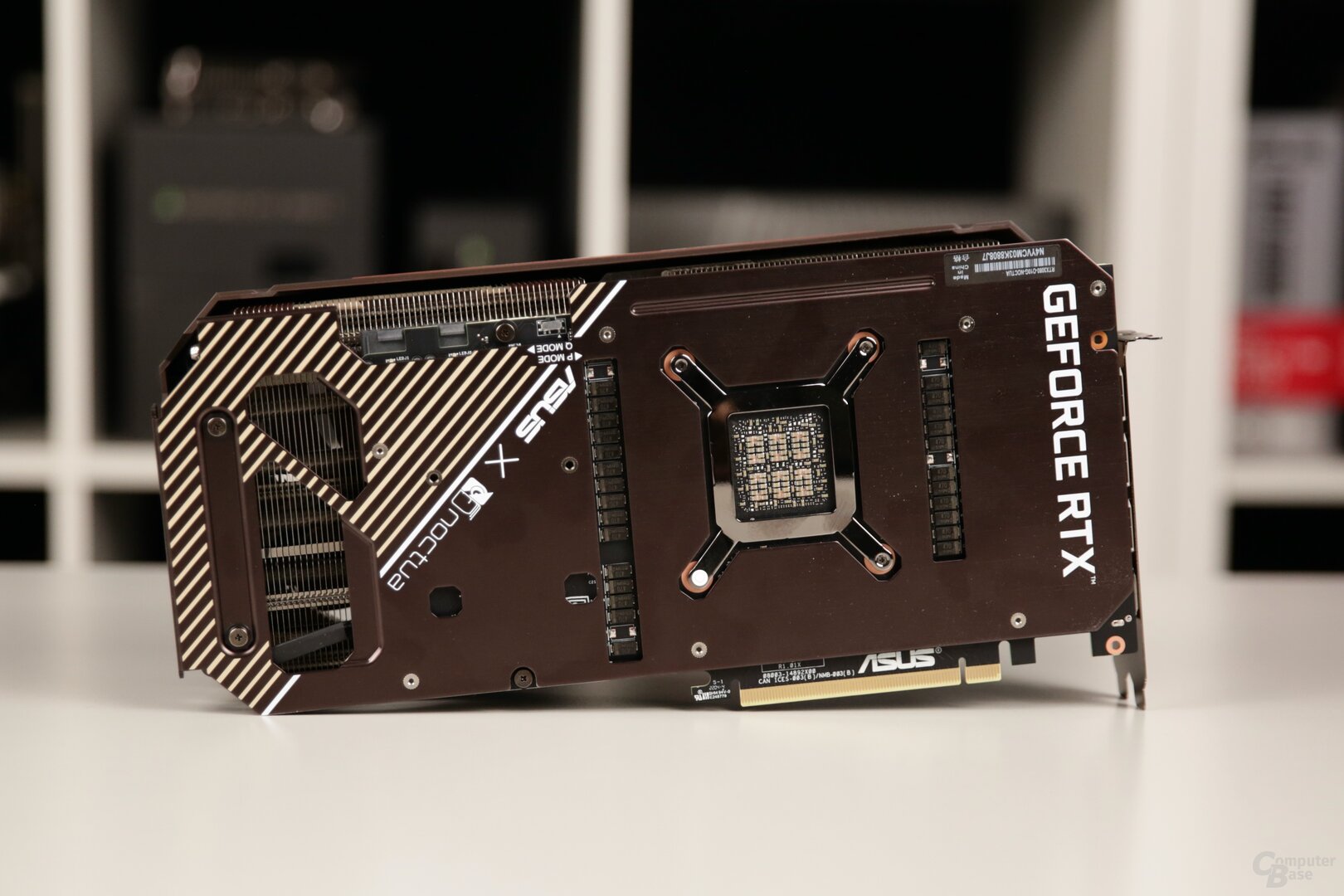
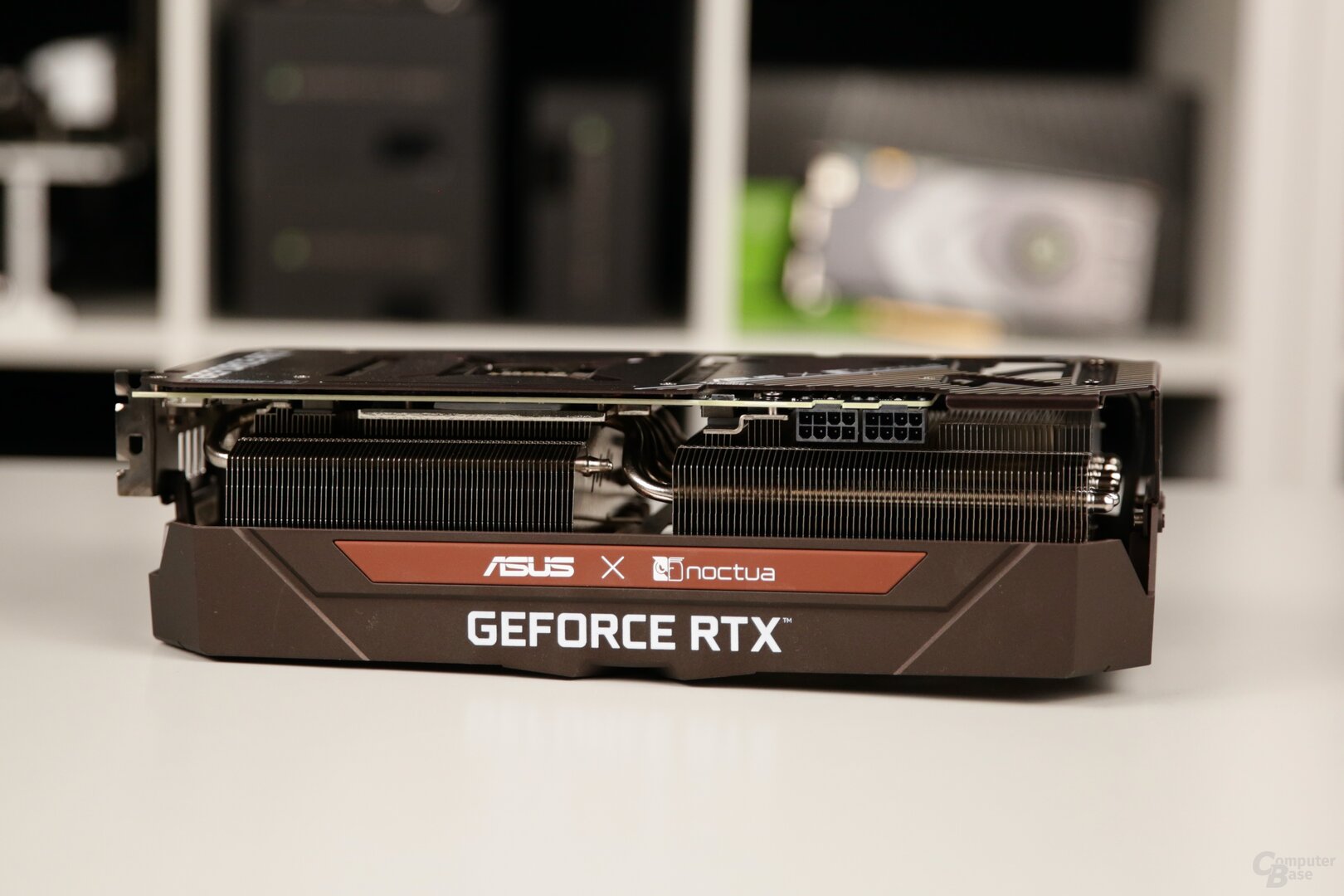
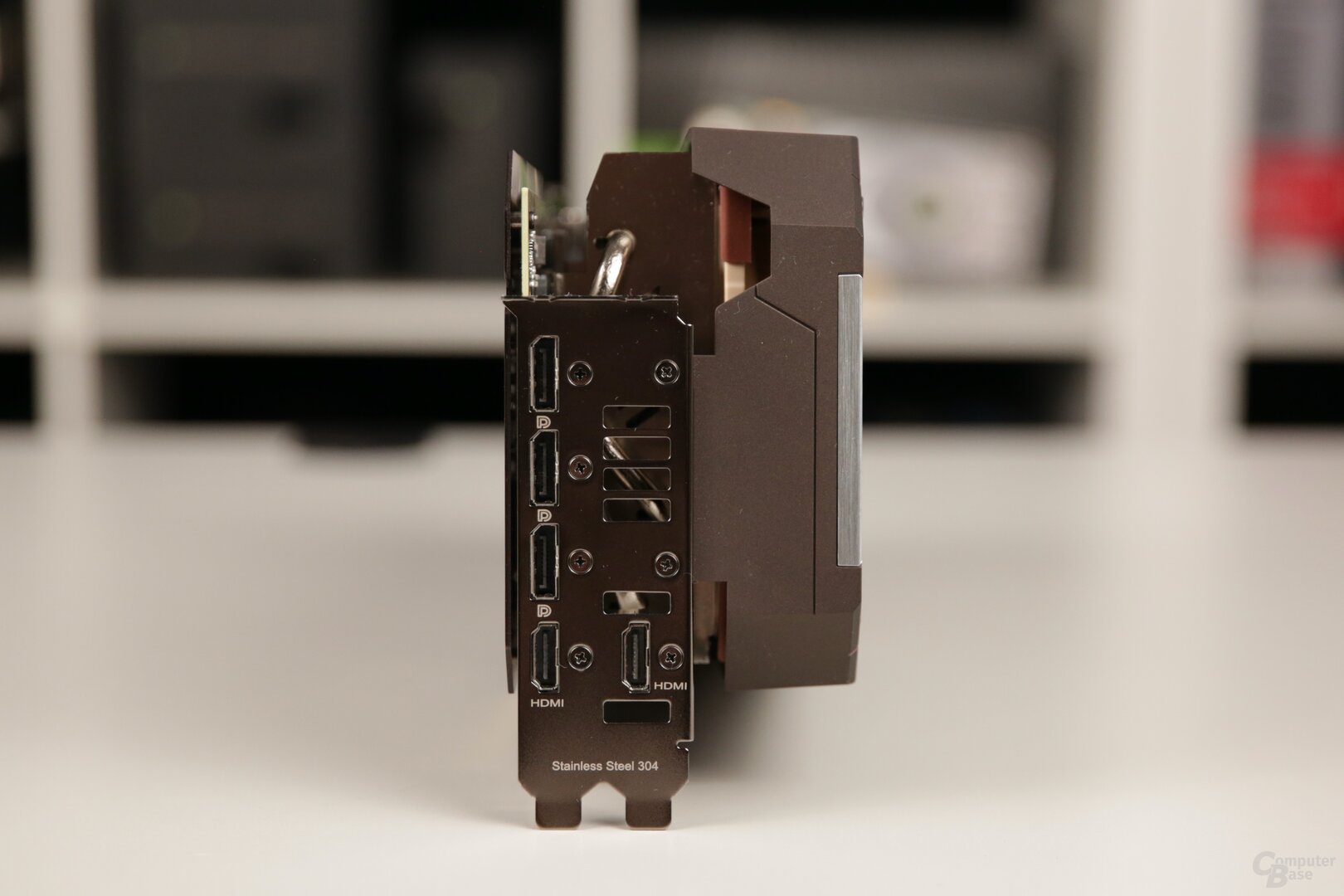
Under the hood is a larger TUF cooler
Instead of a height of only 32 mm for the TUF, the heat sink of the Noctua is 42 mm, the overall width has also been increased by 9 mm to 120 mm and the distance between the heat pipes has increased by 6 mm to 94 mm. But not only the dimensions of the heat sink have changed. The original TUF design includes a separate heatsink for memory and a copper plate for the GPU, while the Noctua design relies on a single, larger copper plate that takes care of the GPU and GDDR6X memory at the same time. This is to prevent excessive memory temperatures from slowing down the graphics card in any way.
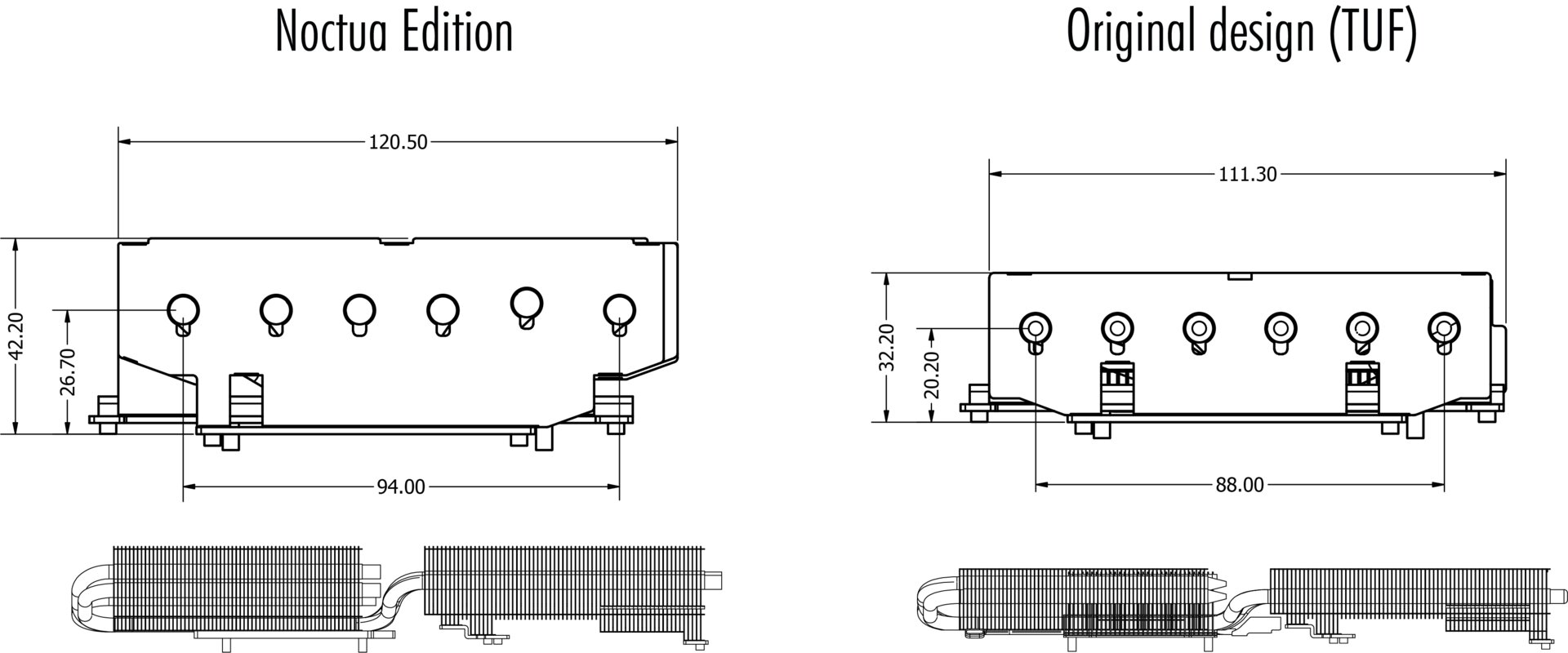
The two fans are again the NF-A12x25 PWM, which costs around 27 euros each – Noctua’s flagship model when it comes to fans. The diameter is 120 mm, the maximum speed is 2,000 revolutions per minute, the connection cables have been shortened.
The fans are glued to the heat sink on the graphics card using double-sided adhesive pads, and the screwed-on fan frame ensures a secure hold. The combination of an enlarged heat sink and 25 mm high fans ensures a width of 4.3 slots – as much as the GeForce RTX 3070 Noctua OC Edition.
The Noctua OC Edition is shorter than the TUF variant, with a length of still 30.5 cm, a height of 14.5 cm and a width of 8.1 cm (4.3 slot), the model first has to be in fit your own case. Most of the time this shouldn’t be a problem, but it’s still a good idea to check before you buy.
Fan curve, clock speeds and BIOS versions
As it should be, the Asus GeForce RTX 3080 Noctua OC Edition turns off the two axial fans for silent operation on the Windows desktop. From a GPU temperature of around 50 °C, they start at just over 500 rpm and level off at 800 rpm before the final speed is finally reached depending on the temperature. If you want, you can also easily create a manual control of the graphics card. It has been shown that the two NF-A12x25, at least on the test example, run without any problems at only 250 revolutions per minute and can keep the speed stable. More speed is only needed to start, but the graphics card then reduces it automatically.
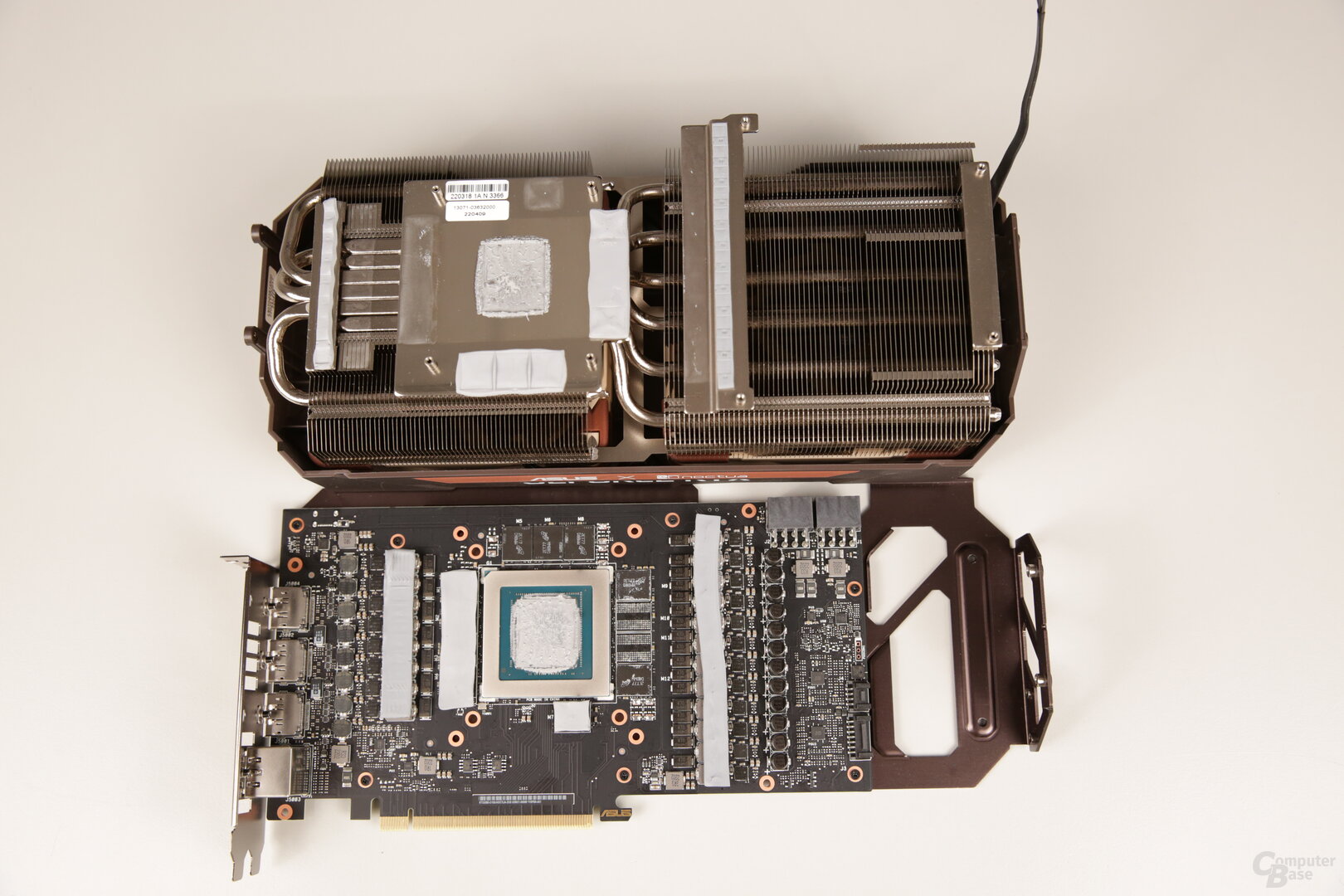
The cooler of the Asus GeForce RTX 3080 Noctua OC
Bild 1 von 2
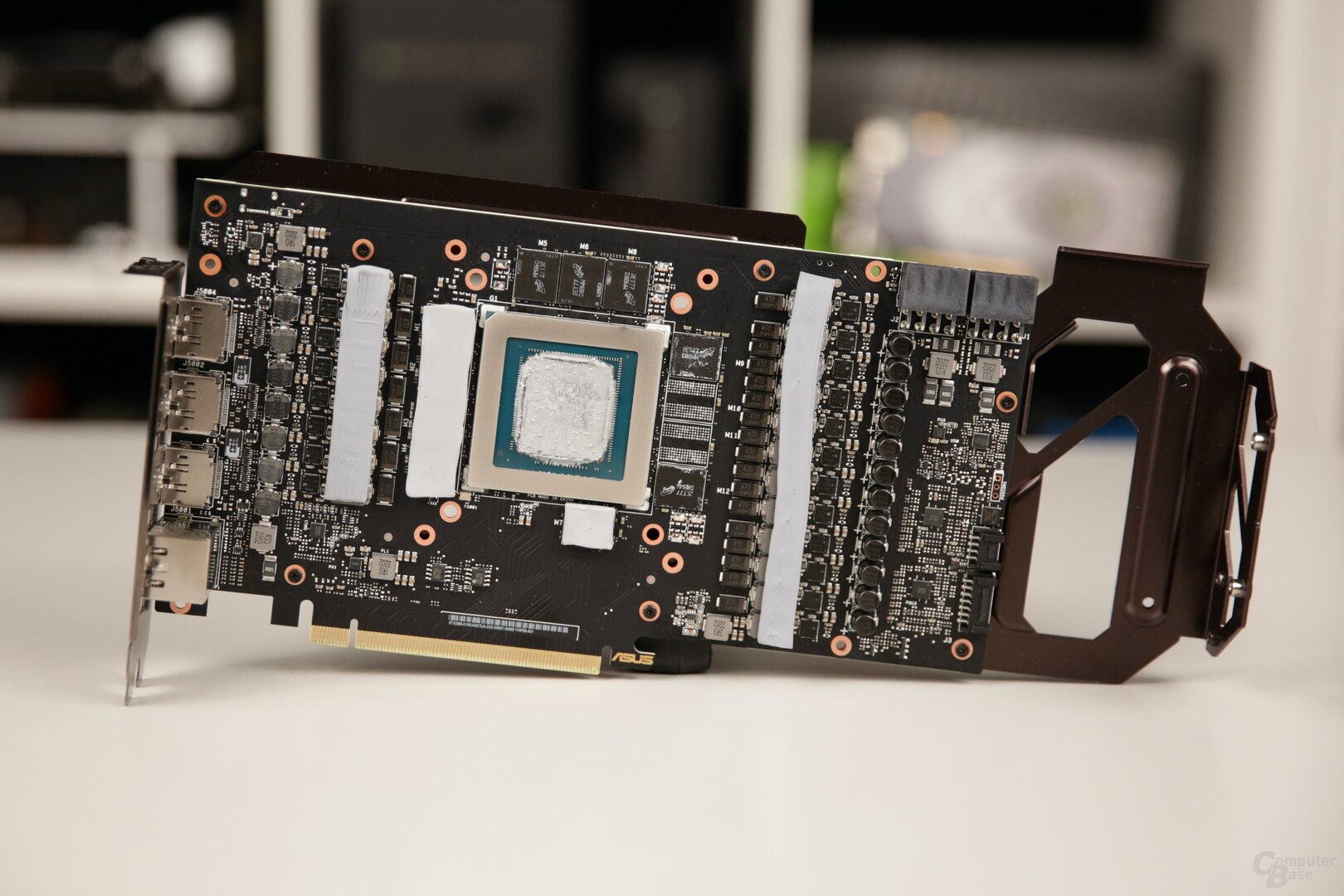
In terms of clock speeds, the GeForce RTX 3080 Noctua OC Edition is identical to the GeForce RTX 3080 TUF OC. Accordingly, the base clock works at 1,440 MHz, the average turbo at 1,785 MHz and the 10 GB GDDR6X memory at 9,504 MHz. If that’s not enough, you can use Asus’ tool GPUTweak II to increase the boost to 1815 MHz. 340 watts is the maximum power consumption of the graphics card, it can be increased manually to 375 watts. Two 8-pin power connectors are required for operation.
Asus has equipped the GeForce RTX 3080 Noctua OC Edition with two BIOS versions. The Quiet BIOS is active by default, alternatively the Performance BIOS can be activated with fan control optimized for cooling performance. The test model came with an active performance BIOS, but that should be different in retail.
Without (RGB) LEDs in Noctua Braun design
What the Asus GeForce RTX 3080 Noctua OC Edition does not have, in contrast to the TUF and almost all other custom designs of the GeForce RTX 3080, is RGB lighting or another light source. Noctua simply doesn’t have any illuminated fans in its portfolio, and Asus doesn’t install any LEDs in the fan frame either. That’s certainly a good thing, because Noctua fans and RGB would at least be a combination that would take a lot of getting used to.
However, this also applies without lighting, because the cooler, like the fans, comes in the classic Noctua colors, which are immediately recognizable with the brown tone, but are not something for every taste. The feel of the graphics card, on the other hand, is very good. The heat sink is of high quality and the processing of the two fans is far superior to all others in the graphics card segment. The frame also makes a decent impression, although it is only made of plastic. There’s still some room for improvement here.
Priced at TUF Strix level
Asus has not given an RRP for the new Noctua OC Edition in advance. If the price situation is similar to the GeForce RTX 3070, the model would have to be placed between the Asus GeForce RTX 3080 Strix and TUF. Because the Asus GeForce RTX 3080 as TUF and Strix currently costs almost identically 1,000 euros, it is difficult to say whether the Noctua Edition will be above, below or at the same price level.
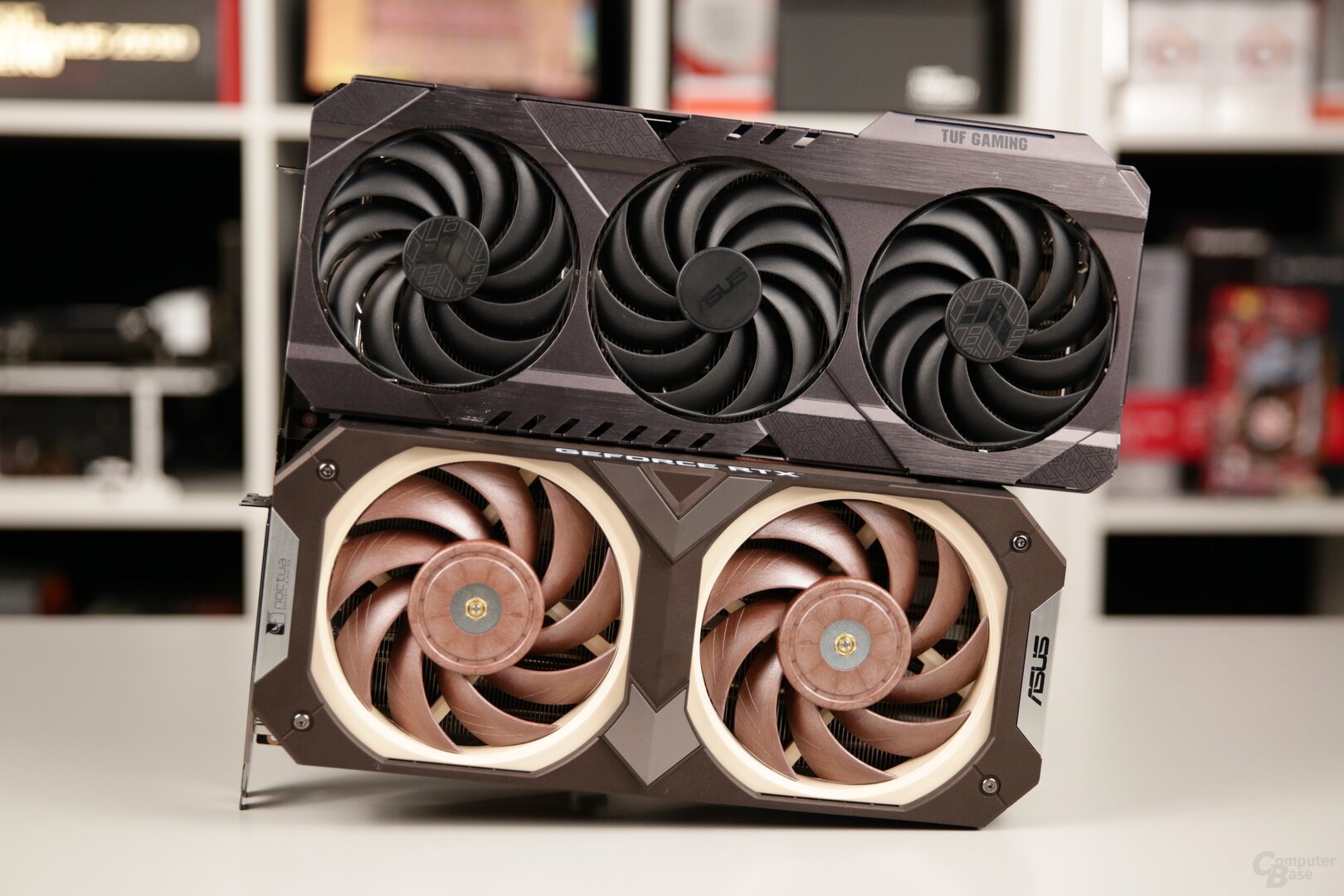
This is how the Asus RTX 3080 Noctua OC Edition clocks in games
1,965 MHz is the highest clock recorded on the Asus GeForce RTX 3080 Noctua OC at any point during the test series. However, this is not a frequency that is used in games with high loads, where 1935 MHz is the maximum. Ultimately, however, this value only applies in low resolutions and when the power limit is fully extended.
In contrast, the frequencies are a good deal lower in demanding games and high resolutions such as Ultra HD. In the test, the graphics card clocked at an average of 1,742 to 1,836 MHz in the factory state, depending on the game. Thus, the clock is almost on the level of Nvidia’s Founders Edition, the differences are very small. Apparently, the model cannot convert the additional 20 watts into a higher frequency.
With the alternative performance BIOS, the temperatures are then slightly lower and the clock speeds are slightly higher, although the differences are small. In the four test games, the graphics card ran at 1760 to 1847 MHz, which is 11 to 18 MHz faster than with the Quiet BIOS active by default. However, as the benchmarks will show, this has no practical impact.
And even in the 30-minute cycle of Doom Eternal, there are only small differences between the two BIOS versions. Like every current GeForce graphics card, the Asus GeForce RTX 3080 Noctua OC clocks slightly higher in the first few seconds of a load phase, but then there is a fairly even frequency that fluctuates within a small range. Whether the model is operated with the Quiet or the Performance BIOS makes no difference in this respect.
Taktverlauf – Ultra HD, Doom Eternal




